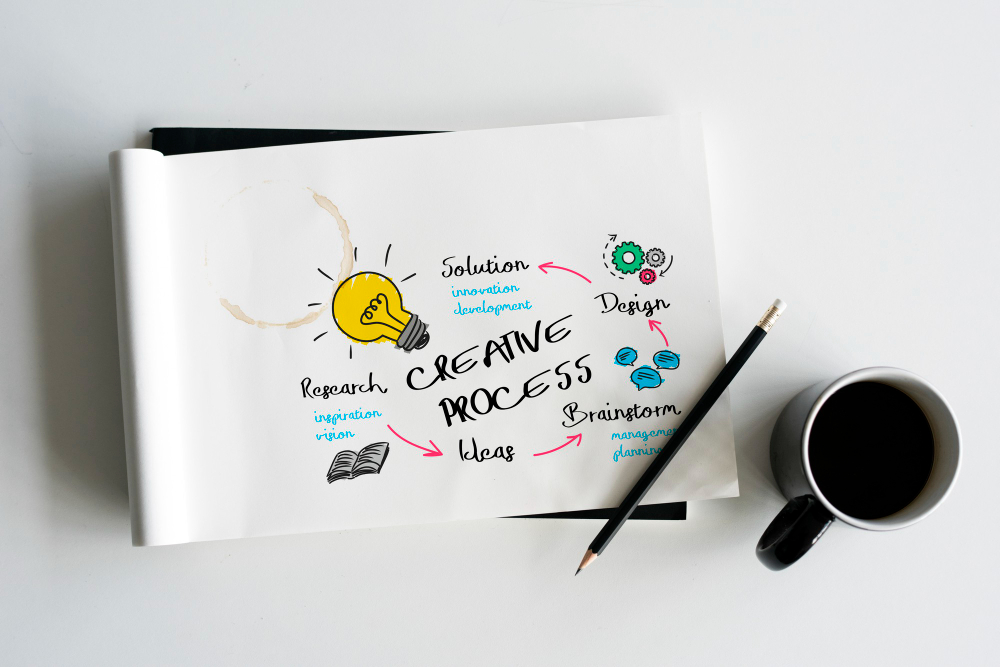Creative Branding: How Agencies Shape Modern Businesses
- 1 How Agencies are Shaping Modern Businesses Through Creative Branding
- 1.1 The Evolution of Agency Roles
- 1.2 The Power of Visual Identity
- 1.3 Storytelling as a Branding Tool
- 1.4 Branding in the Digital Age
- 1.5 The Role of Innovation in Branding
- 1.6 Sustaining Brand Relevance
- 1.7 The Human Touch in Branding
- 1.8 Branding Across Cultures
- 1.9 Leveraging Data in Brand Strategy
- 1.10 Embracing Sustainability in Branding
- 1.11 The Art of Rebranding
- 1.12 Integration of Technology in Brand Experiences
- 1.13 The Strategic Use of User Experience (UX)
- 1.14 Collaborative Branding
- 1.15 Building Brands with Purpose
- 1.16 Measuring Brand Impact
- 2 The Future of Branding Agencies
Branding is the art of aligning what you want people to think about your company with how they perceive it. Today’s creative agencies play a pivotal role in this alignment, crafting compelling narratives that resonate with target audiences. These agencies use a blend of strategy, design, and technology to create a brand identity that stands out in a crowded market. They don’t just focus on logos and color schemes; they delve into the company’s ethos, ensuring that every aspect of the brand communicates the core values and messages intended.
The rise of digital platforms has transformed how agencies approach branding. With the ability to gather detailed consumer data and feedback in real-time, agencies can now tailor brand strategies to be more responsive and personalized. This dynamic approach to branding is not just about staying relevant; it’s about leading conversations and setting trends. Agencies that harness the power of data analytics and creative innovation are the ones shaping modern businesses.
How Agencies are Shaping Modern Businesses Through Creative Branding
The Evolution of Agency Roles
Gone are the days when advertising agencies were the one-stop-shop for all marketing and branding needs. In the current landscape, agencies have evolved to specialize in various aspects of branding, from digital marketing to user experience design. This evolution has been driven by the increasing complexity of the consumer market and the channels through which brands can engage with audiences. An agency’s role now extends beyond creating ad campaigns to include developing a complete brand experience that is consistent across all touchpoints.
Moreover, agencies are becoming partners in strategy, not just execution. They work closely with businesses to understand market challenges and opportunities, crafting brand strategies that are agile and future-focused. This collaborative relationship is crucial for brands that want to stay ahead of the curve, as it combines the creative firepower of the agency with the industry insight of the business, resulting in a brand that is both innovative and grounded in market realities.
The Power of Visual Identity
A brand’s visual identity is its most recognizable component, often the first interaction a consumer has with a company. Creative agencies understand the power of this first impression and invest in creating visual elements that are not only aesthetically pleasing but also meaningful. A logo, for example, is more than just an image; it’s a distillation of the brand’s identity. Agencies aim to encapsulate the brand’s essence in its visual identity, creating a strong association in the consumer’s mind.
This process of creating a visual identity extends to every visual touchpoint of the brand, from product packaging to website design. Each element is an opportunity to tell the brand’s story and reinforce its position in the market. Agencies that excel in crafting a cohesive visual identity understand that consistency is key. They ensure that every visual aspect of the brand is harmonious, creating a seamless brand experience that builds trust and recognition.
Storytelling as a Branding Tool
A brand is more than a product or a service; it’s a story that creates emotional connections with consumers. Creative agencies have mastered the art of storytelling, weaving narratives that engage and inspire. These stories don’t just sell a product; they invite the audience into a world built around the brand. By doing so, agencies create a brand identity that is relatable and memorable, encouraging customer loyalty and advocacy.
Effective storytelling requires a deep understanding of the brand’s audience. Agencies conduct extensive research to create personas and narratives that resonate on a personal level. Whether it’s through a heartfelt commercial or an interactive online experience, the goal is to make the brand’s story part of the consumer’s own narrative. In doing so, agencies transform consumers into brand ambassadors, leveraging the power of word-of-mouth in the digital age.
Branding in the Digital Age
The digital age has revolutionized branding, opening up a world of possibilities for creative agencies. With the advent of social media, brands can engage with consumers directly, fostering a two-way conversation that enriches the brand experience. Agencies have adapted to this new landscape by creating digital-first branding strategies that leverage the power of online communities and platforms.
Moreover, the digital realm allows for a more nuanced approach to branding. Agencies can segment audiences with unprecedented precision, tailoring messages to specific groups while maintaining a coherent brand voice. This level of customization has raised consumer expectations; they now seek brands that speak directly to them, offering personalized experiences. Agencies that can deliver on this expectation are the ones that propel brands to new heights in the digital era.
The Role of Innovation in Branding
In a market that is constantly evolving, innovation is key to keeping a brand relevant. Creative agencies are at the forefront of this innovation, experimenting with new mediums and messaging to capture the audience’s attention. They push the boundaries of traditional branding, exploring virtual reality, artificial intelligence, and other emerging technologies to create immersive brand experiences.
Innovation, however, is not just about using the latest technology. It’s about thinking differently, approaching problems in new ways, and being willing to take risks. Agencies that foster a culture of innovation encourage creative thinking and experimentation, leading to breakthrough ideas that set brands apart. This commitment to innovation ensures that brands remain dynamic and interesting in a competitive marketplace.
Sustaining Brand Relevance
Maintaining brand relevance in a rapidly changing world is a significant challenge. Creative agencies address this by keeping their fingers on the pulse of cultural and technological trends. They adopt branding strategies to reflect societal shifts and technological advancements, ensuring that the brand remains connected to its audience. This proactive approach to branding is essential for longevity, as it allows brands to evolve with their consumers.
Sustaining relevance also means being responsive to consumer feedback and market shifts. Agencies use a variety of tools to monitor brand performance, engaging with consumers across multiple channels to gather insights. This data-driven approach to brand management enables agencies to fine-tune branding strategies in real time, addressing potential issues before they impact the brand’s standing in the market.
The Human Touch in Branding
Despite the increasing reliance on technology, successful branding still relies on the human touch. Creative agencies recognize the importance of human emotions and experiences in building a brand. They craft campaigns and experiences that touch on universal human truths, forging a genuine connection with the audience. This focus on the human element ensures that the brand’s message resonates at a deeper level, beyond the superficial appeal of visuals or slogans.
The human touch also extends to the agency-client relationship. Agencies that prioritize personal interaction and understanding are better equipped to translate a company’s vision into a compelling brand. They work closely with clients, building relationships that are based on trust and mutual respect. This collaboration allows for a more authentic brand voice, one that is true to the company’s core values and resonates with the audience.
Branding Across Cultures
In our globalized world, brands often need to appeal to a diverse international audience. Creative agencies navigate this complex landscape by developing branding strategies that are culturally sensitive and adaptable. They conduct extensive research to understand different cultural contexts and nuances, ensuring that the brand’s message is appropriate and effective across borders.
Cross-cultural branding is not just about translation; it’s about transcreation, which involves adapting a brand’s message to resonate with different cultures while maintaining its core essence. Agencies that excel in this area are able to create a global brand identity that is consistent yet flexible, allowing for local adaptations that respect cultural differences. This global perspective is increasingly important as brands seek to expand their reach and connect with audiences around the world.
Leveraging Data in Brand Strategy
Data analytics has become a cornerstone of modern branding strategy. Creative agencies use data to inform every aspect of their work, from audience segmentation to campaign performance tracking. By analyzing consumer behavior and market trends, agencies can make evidence-based decisions that enhance brand strategy. This data-centric approach leads to more targeted and effective branding efforts, ensuring that every initiative is optimized for success.
The wealth of data available today also enables agencies to personalize branding efforts like never before. They can create highly personalized content and experiences that speak directly to individual consumers, increasing engagement and loyalty. Agencies that harness the power of data analytics are able to deliver sophisticated branding solutions that are both creative and scientifically grounded.
Embracing Sustainability in Branding
Sustainability has become a critical aspect of branding as consumers increasingly seek out brands that align with their values. Creative agencies are responding to this demand by integrating sustainability into brand strategy. They help businesses communicate their commitment to social and environmental responsibility, turning sustainable practices into a key component of the brand’s identity.
This approach not only appeals to the consumer’s conscience but also positions the brand as a leader in corporate responsibility. Agencies that advocate for sustainability in branding are not just doing good; they are also doing well, as they create a brand image that is both ethical and appealing to the modern consumer.
The Art of Rebranding
Rebranding is a delicate process that creative agencies handle with care. It involves changing the brand’s identity, which can be risky if not done correctly. The goal of rebranding is to signal a new direction or revitalized purpose without alienating existing customers. Agencies that specialize in rebranding take a strategic approach, carefully planning each step to ensure a smooth transition.
The key to successful rebranding is to maintain the core values and elements that customers have come to trust while updating the brand to reflect current realities. Agencies work to preserve the brand’s heritage, blending the old with the new in a way that is fresh yet familiar. This careful balancing act can breathe new life into a brand, reinvigorating its image and appeal.
Integration of Technology in Brand Experiences
The integration of technology into brand experiences has opened up new possibilities for engagement. Creative agencies leverage cutting-edge tech to create interactive and immersive experiences that captivate consumers. From augmented reality to interactive installations, technology is used to enhance the brand story and provide value-added experiences.
This technological approach goes beyond gimmicks; it’s about adding a layer of interaction that deepens the consumer’s connection with the brand. Agencies that are adept at integrating technology into branding create memorable experiences that reinforce the brand’s message and differentiate it in the market.
The Strategic Use of User Experience (UX)
User Experience (UX) is not just a buzzword; it’s a crucial element of a brand’s digital presence. Creative agencies place a strong emphasis on UX because it directly influences how consumers interact with a brand online. A well-designed UX leads to a more enjoyable and effective user journey, which can significantly boost brand perception and customer loyalty. Agencies conduct thorough research into user behavior to design websites, apps, and digital platforms that are intuitive and user-friendly.
This strategic use of UX is about understanding the pain points and desires of the user, and crafting digital experiences that are seamless and satisfying. Agencies often use iterative design processes, continuously testing and refining the UX to ensure it meets the highest standards. By prioritizing UX in their branding strategies, agencies can dramatically improve the way users engage with a brand, leading to better outcomes for businesses.
Collaborative Branding
In the spirit of collaboration, it’s essential to mention Designity Agency, a noteworthy player in the creative industry. As agencies aim for more client-centric models, Designity’s approach of connecting businesses with US-based creative talent and a dedicated creative director resonates with the trend. Their proprietary, tech-enabled platform allows for a seamless collaboration that enhances the creative process and drives marketing ROI. It’s a fine example of how modern agencies are reshaping the industry, mirroring a shift towards more agile, cost-effective solutions that don’t compromise on quality.
Collaborative branding transcends the usual client-agency relationship. It is about forging an environment that nurtures creative thought and ensures the active participation of all parties involved in the branding journey. This method encourages a more profound comprehension and synchronization with the brand’s aims, yielding a brand identity that is genuine and potent. Agencies that champion a holistic design process, steered by seasoned creative directors, demonstrate how cooperative efforts can culminate in triumph within the arena of contemporary branding.
Building Brands with Purpose
In today’s market, consumers seek brands that stand for something beyond their products or services. Agencies help businesses define and communicate their purpose, creating brands that are meaningful and resonant. A brand with purpose is not just selling; it’s making a statement, supporting a cause, or contributing to a larger conversation. Agencies guide companies in discovering their ‘why’ and bringing it to the forefront of their branding efforts.
A purpose-driven brand strategy requires authenticity and consistency. Agencies ensure that a brand’s purpose is reflected in every aspect of its identity, from its messaging to its actions. When consumers see a brand living its purpose, they’re more likely to form a strong, lasting connection. Agencies that can craft these purposeful brands are creating more than just customer loyalty; they’re building communities around shared values and goals.
Measuring Brand Impact
Finally, measuring the impact of branding is vital to understanding its effectiveness. Agencies employ a variety of metrics and tools to gauge brand awareness, perception, and loyalty. They look at both quantitative data, such as sales figures and website traffic, and qualitative data, like customer feedback and brand sentiment. This comprehensive approach to measurement allows agencies to see the full picture of a brand’s impact.
Measuring brand impact also helps agencies refine their strategies. By understanding what works and what doesn’t, they can make informed decisions about where to invest their creative efforts. Agencies that are skilled at measuring brand impact can demonstrate their value to businesses, showing how their branding efforts contribute to the company’s success. It’s an essential part of the branding process, ensuring that every effort is driving towards tangible business outcomes.
The Future of Branding Agencies
The landscape of branding is continuously evolving, and agencies must adapt to stay relevant. The future of branding agencies lies in their ability to be flexible, data-driven, and customer-centric. They must continue to innovate, leveraging new technologies and methodologies to create brands that are dynamic and responsive to market changes. As they look ahead, agencies will need to focus on the importance of collaboration, purpose, and measurement to build brands that not only stand out but also stand the test of time.
Creative agencies are more than just service providers; they are vital collaborators in the journey of business growth. With a deep understanding of the intricacies of contemporary branding and a commitment to strategic innovation, these agencies chart the course for businesses to flourish in an ever-evolving market. Navigating this intricate terrain requires a synergistic partnership between businesses and their creative guides. The brands poised for success are those constructed with deliberate intention, groundbreaking innovation, and profound insight—hallmarks that are the cornerstone of effective creative branding.




















